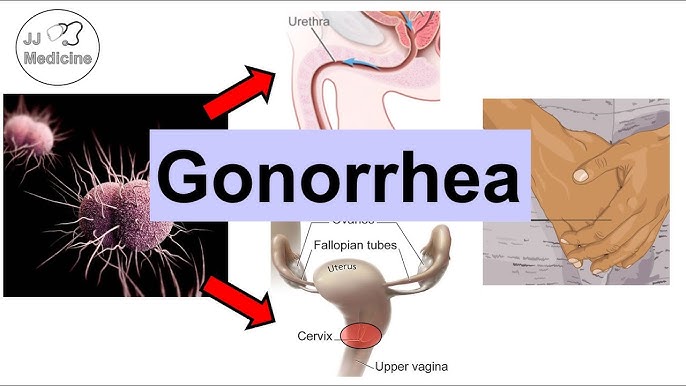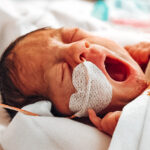Neisseria gonorrhoeae pelvic cellulitis is a rare but serious bacterial infection affecting the pelvic tissues, often resulting from untreated or complicated gonorrhea. This condition can lead to severe inflammation, abscess formation, and systemic infections, making early diagnosis and prompt treatment crucial. It primarily affects women due to the anatomical spread of gonococcal infections from the cervix to deeper pelvic structures, but cases in men with gonococcal proctitis or peritoneal involvement have also been reported.

Causes and Risk Factors
1. Pathogen: Neisseria gonorrhoeae
Neisseria gonorrhoeae is a gram-negative diplococcus that primarily infects the mucosal surfaces of the genitourinary tract, rectum, and pharynx. When left untreated, it can invade deeper tissues, leading to pelvic cellulitis and other complications such as pelvic inflammatory disease (PID), tubo-ovarian abscess, and peritonitis.
2. Transmission and Risk Factors
- Unprotected sexual contact (vaginal, anal, or oral)
- Multiple sexual partners and high-risk sexual behaviors
- Previous sexually transmitted infections (STIs)
- Weakened immune system (HIV, immunosuppressive therapy)
- Intrauterine devices (IUDs) or recent gynecological procedures
- Delayed or inadequate treatment of gonorrhea
Pathophysiology of Pelvic Cellulitis from Gonorrhea
The infection begins with mucosal invasion, followed by bacterial proliferation, immune response activation, and spread to deeper pelvic tissues.
Symptoms of Neisseria gonorrhoeae Pelvic Cellulitis
Pelvic cellulitis caused by Neisseria gonorrhoeae presents acute pelvic pain and systemic symptoms due to the spread of infection.
1. Early Symptoms
- Lower abdominal and pelvic pain
- Purulent vaginal discharge (often yellow-green)
- Dysuria (painful urination)
- Intermenstrual or postcoital bleeding
2. Advanced Symptoms
- Severe pelvic tenderness
- High fever and chills
- Nausea and vomiting
- Pain during intercourse (dyspareunia)
- Rectal pain (if infection spreads to the peritoneum)
3. Complications
- Tubo-ovarian abscess – A pus-filled infection in the fallopian tubes or ovaries.
- Pelvic peritonitis – Infection of the peritoneal lining in the pelvis.
- Sepsis – Systemic spread of infection leading to life-threatening complications.
- Infertility – Scarring of reproductive organs due to chronic inflammation.
Diagnosis of Neisseria gonorrhoeae Pelvic Cellulitis
Accurate diagnosis is critical for targeted antibiotic therapy and prevention of complications.
1. Clinical Examination
- Pelvic tenderness on bimanual examination.
- Cervical motion tenderness (Chandelier sign) indicative of PID.
2. Laboratory Tests
- Gram Stain and Culture – Identifies Neisseria gonorrhoeae from cervical, vaginal, or rectal swabs.
- Nucleic Acid Amplification Test (NAAT) – Gold-standard test for gonorrhea diagnosis.
- Complete Blood Count (CBC) – Shows leukocytosis (elevated white blood cells).
- C-Reactive Protein (CRP) & Erythrocyte Sedimentation Rate (ESR) – Indicate inflammation.
3. Imaging Studies
- Pelvic Ultrasound – Detects abscesses or fluid collections.
- CT/MRI of the Pelvis – Evaluates severe infections, abscess formation, or peritonitis.
Treatment of Neisseria gonorrhoeae Pelvic Cellulitis
The treatment of gonococcal pelvic cellulitis requires antibiotic therapy, pain management, and possible surgical intervention.
1. Antibiotic Therapy
Empirical treatment covers Neisseria gonorrhoeae and possible co-infections with Chlamydia trachomatis.
- Ceftriaxone (IV/IM) 1g daily + Doxycycline (oral) 100mg BID for 14 days
- Metronidazole (500mg BID for 14 days) if anaerobic coverage is needed.
For severe cases requiring hospitalization:
- IV Ceftriaxone + IV Doxycycline
- Transition to oral antibiotics once stable.
2. Pain Management and Supportive Care
- NSAIDs or Acetaminophen for fever and pelvic pain.
- Intravenous fluids for hydration.
- Hospital monitoring for patients with sepsis risk.
3. Surgical Intervention (For Severe Cases)
Surgical drainage may be necessary for:
- Tubo-ovarian abscesses >5cm
- Pelvic peritonitis with extensive pus formation
- Refractory infections despite antibiotic therapy
Prevention of Neisseria gonorrhoeae Pelvic Cellulitis
Preventative strategies focus on reducing STI transmission and ensuring early treatment.
1. Safe Sexual Practices
- Consistent condom use reduces gonorrhea transmission.
- Regular STI screening for sexually active individuals.
2. Early Detection and Treatment of Gonorrhea
- Prompt treatment prevents ascending infections and complications.
- Sexual partners should be tested and treated simultaneously to avoid reinfection.
3. HPV and Gonorrhea Vaccination Research
- While no gonorrhea vaccine exists yet, ongoing research may lead to future prevention strategies.
Neisseria gonorrhoeae pelvic cellulitis is a severe complication of gonorrhea, leading to pelvic pain, abscess formation, and systemic infection. Early detection through clinical examination, laboratory testing, and imaging is essential for timely treatment. IV antibiotics, pain management, and, in some cases, surgical intervention are required for effective recovery. Safe sexual practices, routine STI screening, and prompt antibiotic therapy remain the best preventive measures against this life-threatening pelvic infection.

